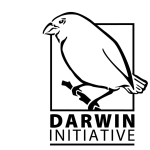Objectives
The Elephant Trade Information System (ETIS), monitors the illegal ivory trade. It is one of two global monitoring systems for elephants under CITES (Convention for International Trade in Endangered Species). ETIS is managed by TRAFFIC International and aims to:
- assess illicit trade in ivory and other elephant products,
- establish trends over time
- determine whether or not such trends are related to CITES decisions.
To achieve this, ETIS collects and analyses illegal ivory seizure records received from law enforcement agencies in 175 countries (CITES Parties). Currently the database contains more than 16,000 records of illegal ivory seizures.
This Darwin Initiative project aims to build a firm foundation and framework for enhancing ETIS by focusing on the development of the following issues:
Database
The database of seizure records is the central component of ETIS. The existing database software was developed in a now obsolete framework and after some ten years of operation the system is in need of major revision and upgrading.
This project developed new database software that will enable data providers to enter and access their own data on-line. The new software will also make it easier for TESA to manage and summarise records of illegal ivory seizures. This presentation to UNEP’s 4th African Elephant Meeting on 27 April 2012 gives a summary on the new database and it is now on-line
Analytical Framework
To provide effective evidence to address the aims of ETIS, statistical analyses of the ETIS seizure records must address and reduce the many different sources of bias in the data. In particular, the data are biased because seizures do not represent a random sample of illegal ivory shipments, and because countries vary in their ability to seize and report ivory shipments – this blog post describes these difficulties in more detail. There are no off-the-shelf statistical tools available for this purpose. Analyses have hitherto been ad hoc, not peer-reviewed and produced in response to CITES reporting requirements. Furthermore, analytical results have not always been expressed in a simple way. For these reasons, ETIS is sometimes perceived by policy makers and the media as being too complex.
This project developed a new analytical framework to adjust for biases in the data. Simple indicators were identified for a new reporting framework so that reports to CITES can follow a clear, transparent and accepted process. The methodology and results were published as a paper in the peer-reviewed journal PLoS One – a video summary of the paper is given here.
Standard Operating Procedures
Currently the operation of ETIS depends on a small number of key personnel and there are no measures to promote long-term sustainability.
This project developed standard operating procedures for ETIS. The database software is being developed in an open-source framework and automated tools to produce some of the reporting requirements for CITES will be provided.
Training
A further source of bias in the data is the sporadic and uneven seizure rate, and reporting of seizures. For example, many elephant range States in Africa and Asia almost never report making ivory seizures themselves, but are regularly implicated in hundreds of seizures made elsewhere in the world.
In the light of the new database software, this project provided resources to revise existing training materials that TESA deploys to assist in monitoring and reporting procedures for seizures of illegal ivory.
My Contribution
As project leader I had overall responsibility for project management. In addition I work jointly with Bob Burn in the development of the analytical framework.
Project Administration
This project was funded by the Darwin Initiative  from the the UK Government’s Department for Environment, Food and Rural Affairs. For project reports see the Darwin Initiative website for project 17-020 – Enhancing the Elephant Trade Information System to guide CITES policy.
from the the UK Government’s Department for Environment, Food and Rural Affairs. For project reports see the Darwin Initiative website for project 17-020 – Enhancing the Elephant Trade Information System to guide CITES policy.
The project was a collaboration between the University of Reading and TRAFFIC International.
- Project Leader: Fiona Underwood (University of Reading)
- Project Partner: Bob Burn (University of Reading)
- Project Partner: Tom Milliken (TRAFFIC International)
